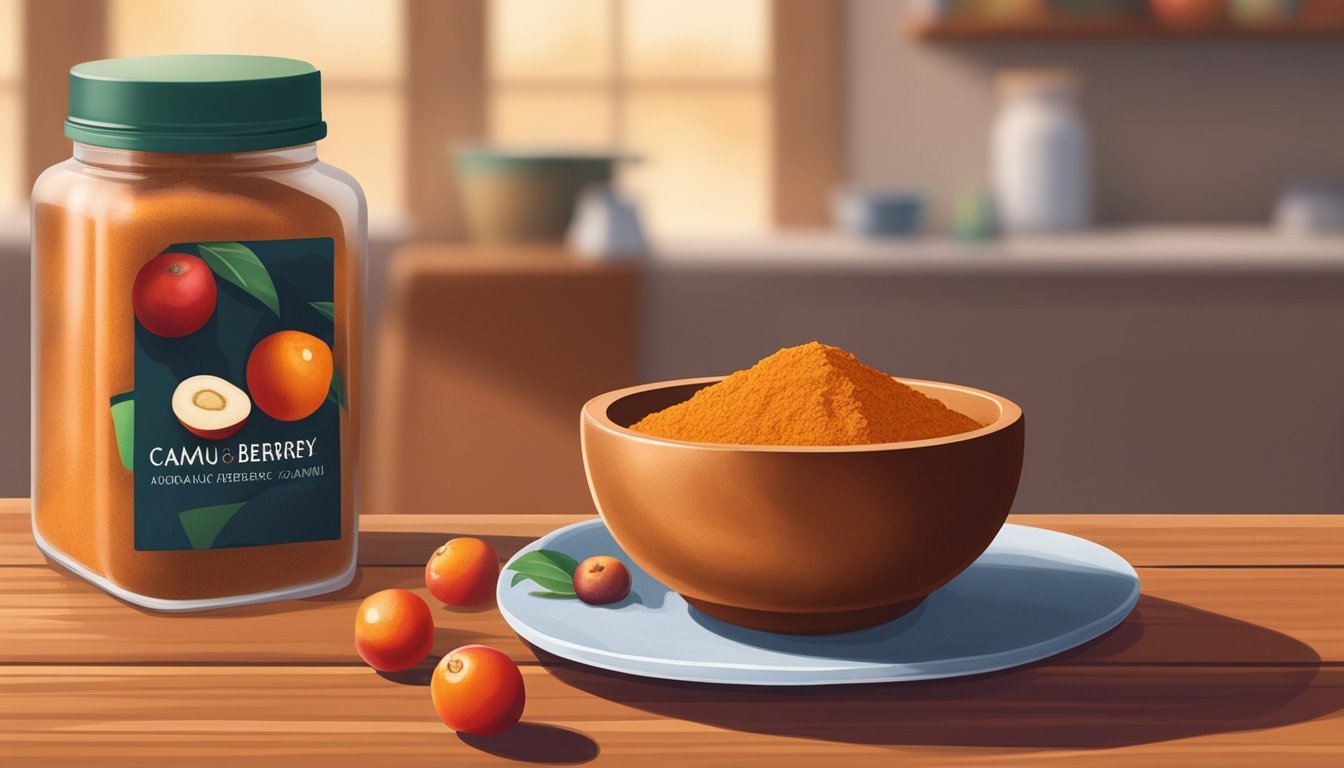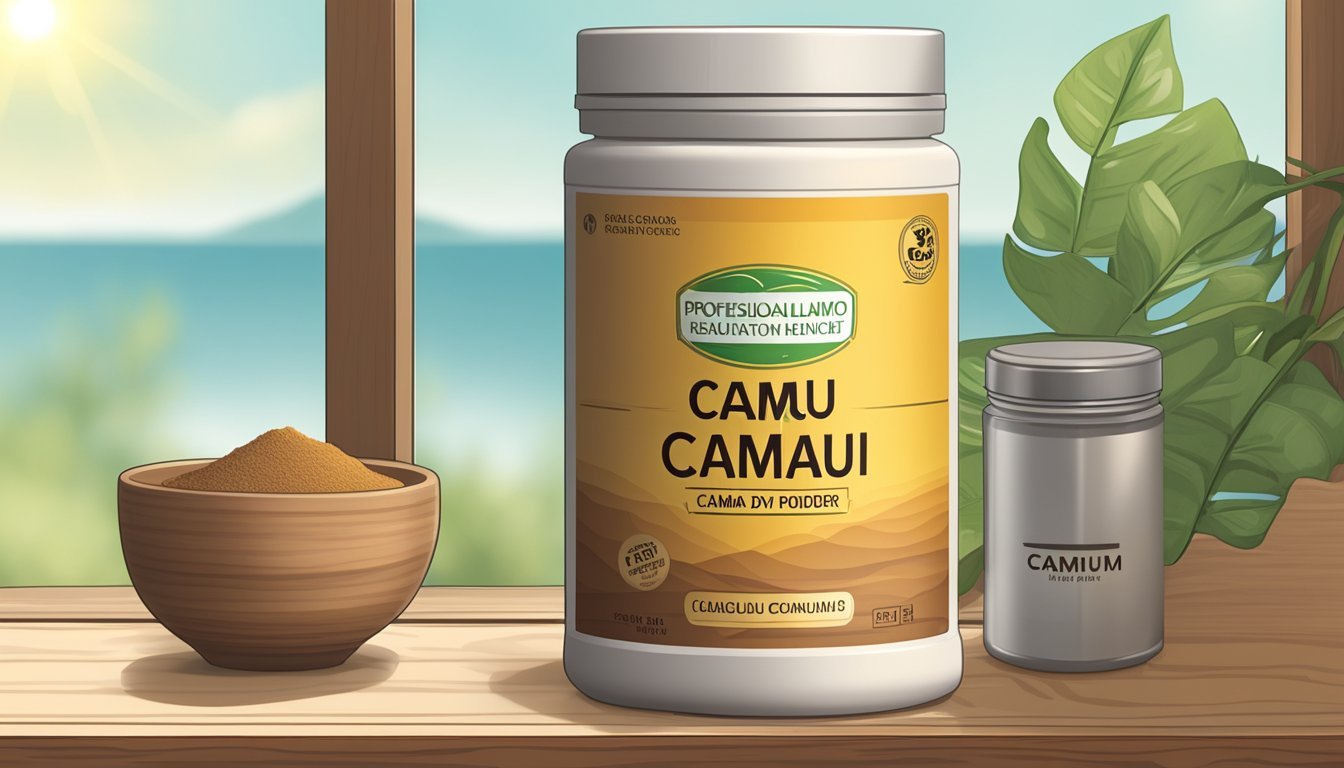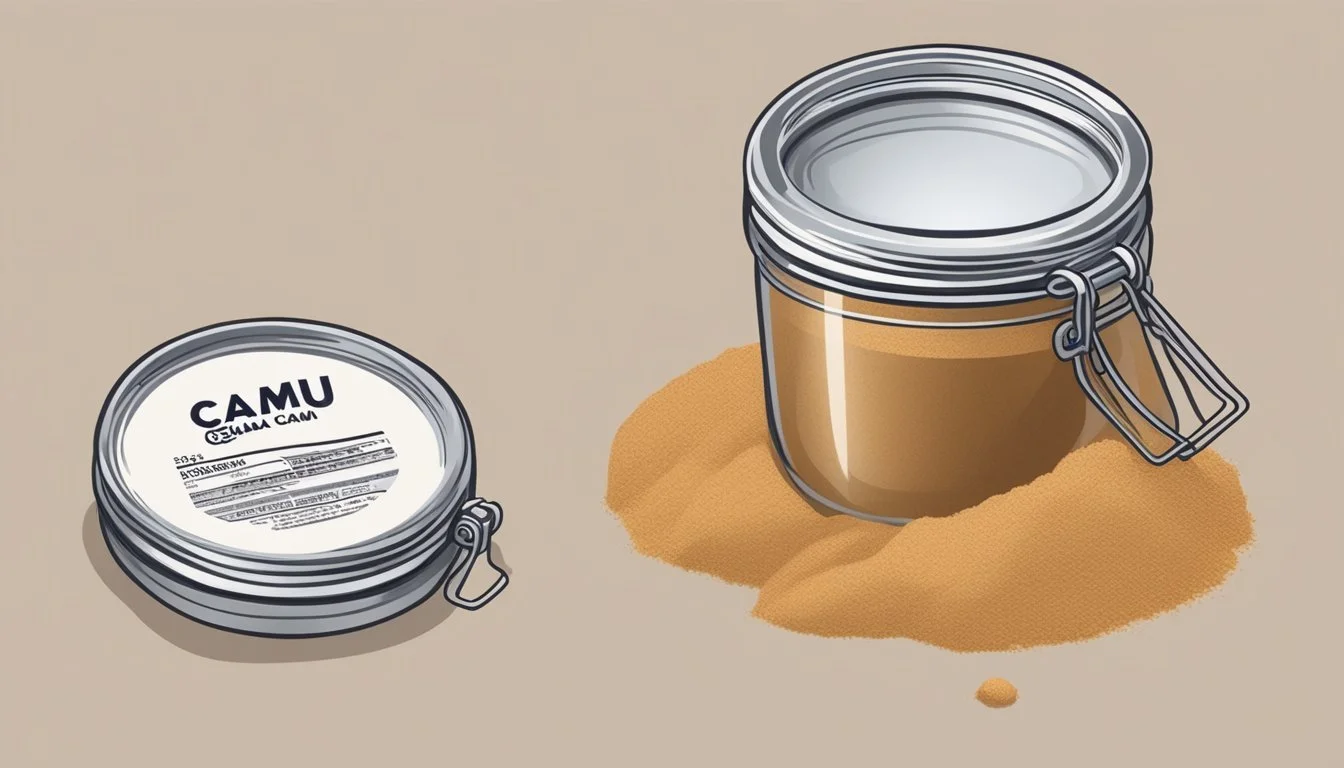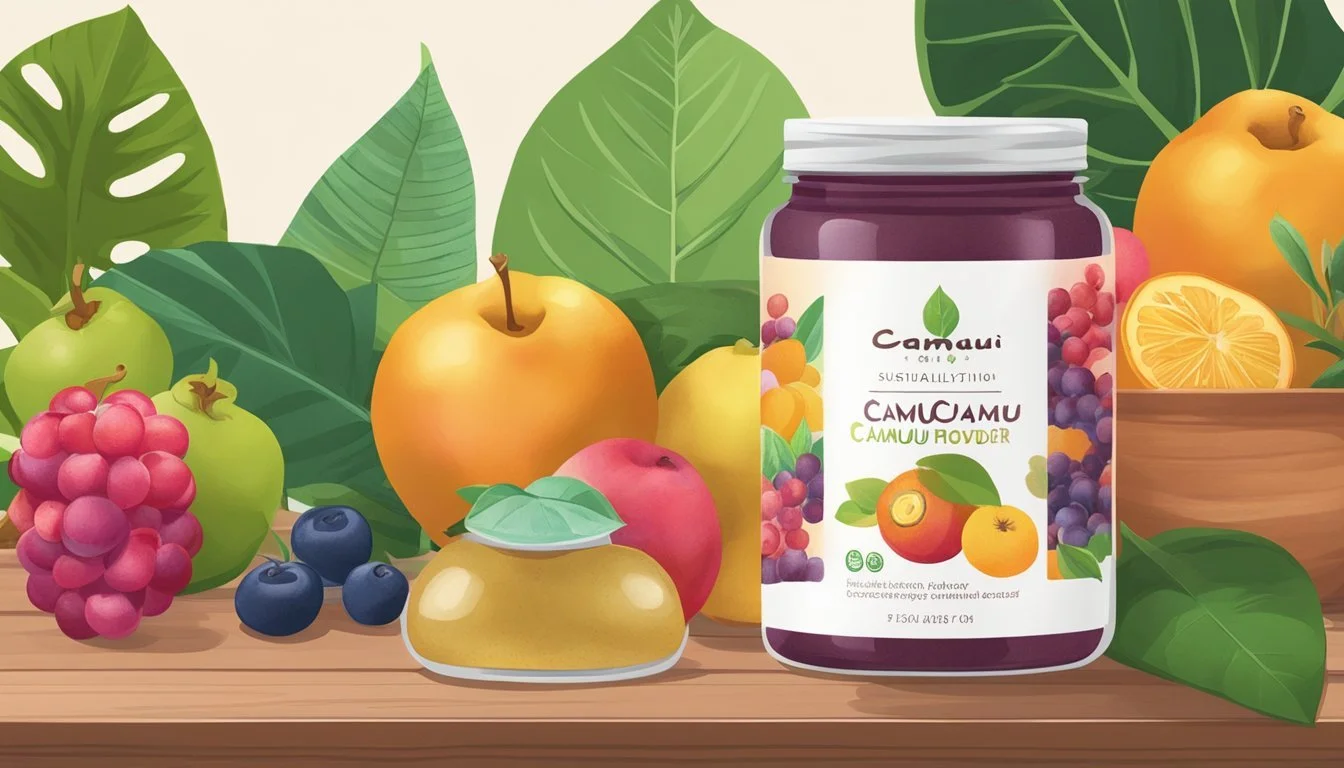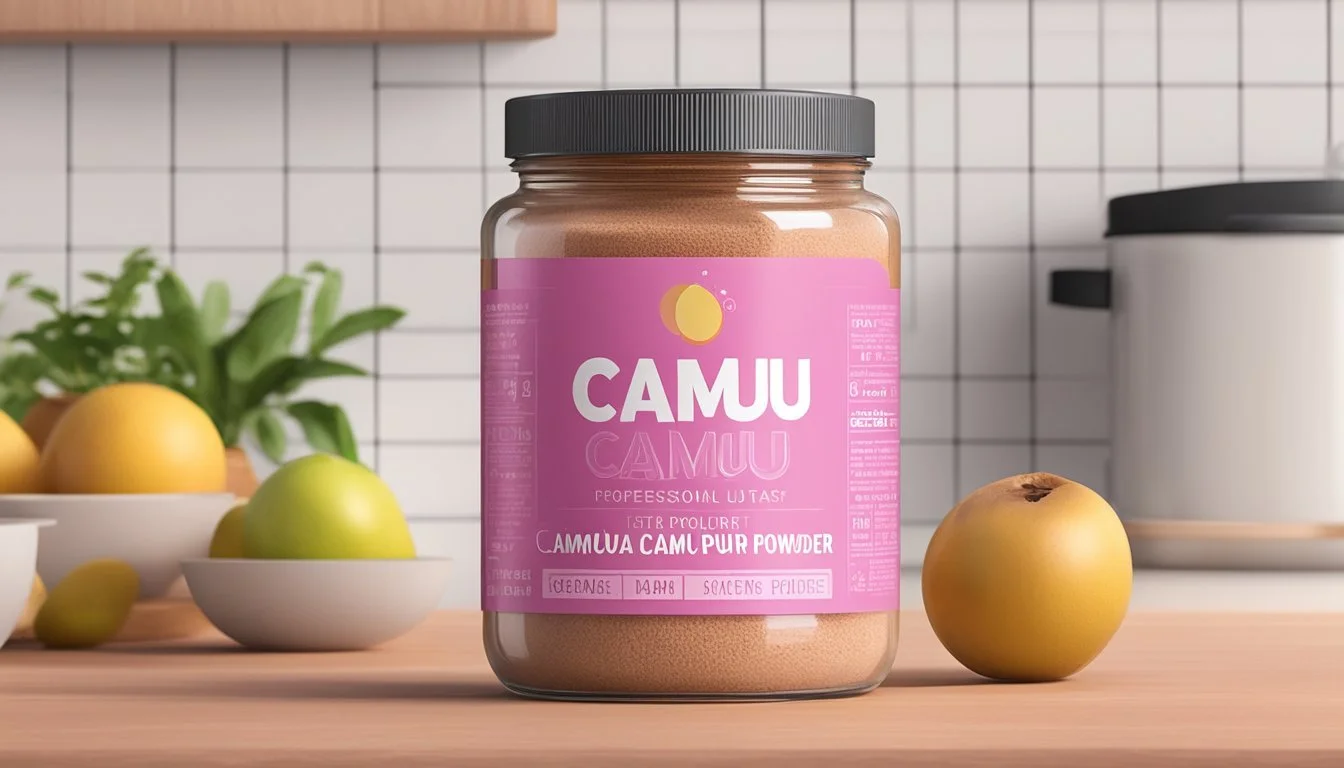Does Camu Camu Powder Go Bad?
Understanding Shelf Life and Storage Tips
Camu camu, a fruit native to the Amazon rainforest, has garnered attention for its remarkably high vitamin C content—significantly surpassing that of even oranges. Hailed as a superfood, it is commonly dried and ground into a powder to preserve its nutrients and extend its shelf life. This powder is favored for its antioxidant capacity and has been linked to various health benefits, including anti-inflammatory effects and potential support for immune function.
Like any natural product, camu camu powder can degrade over time. Exposure to heat, light, air, and moisture can accelerate this process. However, when stored properly in a cool, dark, and dry place, camu camu powder can maintain its quality for an extended period. The packaging often provides a best-by date, which can serve as a guideline for freshness, but the powder may still be safe to consume beyond that date if there are no signs of spoilage.
It is crucial for consumers to assess the shelf life of camu camu powder, understanding the factors that contribute to its longevity. Investing in quality products, handling them with care, and following storage recommendations can help ensure that the benefits of this superfood are enjoyed to their fullest potential. Look for any discoloration, off-odors, or signs of mold, as these can indicate that the powder has gone bad and should not be consumed.
What Is Camu Camu?
Camu camu, known scientifically as Myrciaria dubia, is a small, bushy riverside tree from the Amazon rainforest, particularly found in Peru and Brazil. Its fruit bears the same name and is notable for its significant vitamin C content which characterizes it as a superfood.
The berry is relatively small, approximately the size of a cherry, and exhibits a sour flavor profile. This tartness is due to the dense concentration of vitamin C, an essential nutrient celebrated for its antioxidant properties.
Inhabitants of the Peruvian Amazon and the wider South American region have long utilized camu camu, not only for its health benefits but also in their local cuisine. It thrives in swampy or flooded areas and is often harvested directly from canoes during the high-water season.
Nutritionally, camu camu is more than just a vitamin C powerhouse. It contains a range of antioxidants and polyphenols, compounds that contribute to its reputation as a superfood.
Availability:
The fruit is often processed into powder, puree, or juice forms, given its intensely acidic nature when fresh.
It's increasingly incorporated into health supplements and nutritional products.
As a superfood, it's gaining global recognition, and current evidence suggests numerous possible health benefits, warranting its growing popularity in health and wellness circles.
Nutritional Profile
Camu camu powder is renowned for its high vitamin C content and the presence of various beneficial minerals and antioxidants. This nutritional combination contributes to the fruit's potential health-promoting properties.
Vitamin C Content
Camu camu is extraordinarily rich in vitamin C, also known as ascorbic acid. One teaspoon (approximately 3 grams) of camu camu powder can contain about 720% of the daily recommended intake of vitamin C, which is substantially more than many other vitamin C sources like oranges.
720% Daily Value per teaspoon (3 grams)
Minerals and Antioxidants
The powder is also a source of several essential minerals, including potassium, which is vital for heart and muscle function, and calcium, necessary for bone health. It provides antioxidants like flavonoids, polyphenols, and anthocyanins known for combatting oxidative stress.
Potassium: Essential for heart and muscle function
Calcium: Necessary for maintaining bone density
Additionally, camu camu contains other antioxidants and dietary fiber, which supports digestive health. These nutrients collectively make camu camu powder a beneficial addition to a balanced diet.
Health Benefits of Camu Camu
Camu camu, a fruit known for its high vitamin C content, is esteemed for supporting immune function and reducing inflammation. It has caught attention for potentially benefiting cardiovascular health and influencing blood sugar and cholesterol levels.
Immune System Support
Camu camu is packed with vitamin C, which is essential for the immune system. High vitamin C intake can strengthen the immune defense by supporting various cellular functions. This potent antioxidant also helps in neutralizing free radicals, mitigating oxidative stress and reducing the chances of disease.
Contains antioxidants that protect against oxidative damage
May reduce the risk of chronic diseases
Anti-Inflammatory Effects
The anti-inflammatory properties of camu camu help in combating inflammation in the body. Chronic inflammation is linked with numerous health issues, including some forms of cancer.
Antioxidant properties contribute to anti-inflammatory benefits
May help in reducing disease-causing inflammation
Cardiovascular Health
Regular consumption of camu camu might have a positive effect on heart disease prevention by improving blood pressure levels and contributing to heart health.
Antioxidants in camu camu may benefit the heart
Can potentially aid in maintaining healthy blood pressure levels
Potential Effects on Blood Sugar and Cholesterol Levels
Components in camu camu may have regulatory effects on blood sugar and cholesterol levels, important for the management of type 2 diabetes. They could also influence the levels of triglycerides, beneficial for insulin response and metabolism.
May assist in the stabilization of blood sugar levels
Could influence cholesterol and triglyceride levels positively
Camu Camu in the Diet
Incorporating camu camu into one's diet introduces a significant source of vitamin C and antioxidants. It's versatile and can be easily added to various foods and beverages for a nutritional boost.
Adding Camu Camu to Foods and Beverages
Camu camu powder is a convenient addition to many types of foods and beverages. It can be stirred into yogurt or oatmeal for a tangy twist. For a refreshing drink, individuals often add a teaspoon of camu camu powder into a glass of water or blend it into smoothies along with other fruits. When dissolved in tea, it adds a citrus-like flavor and enhances the drink's vitamin C content.
Salad dressings benefit from camu camu by incorporating the powder or puree into vinaigrettes, adding not just flavor but also a nutritional enhancement. By using camu camu, chefs and nutrition enthusiasts are able to fortify their dishes with minimal change to the taste profile of the original recipes.
Recipes and Serving Suggestions
Smoothies:
To create a tropical vitamin C-packed smoothie, blend together:
1 cup mango chunks
1 sliced banana
1 tablespoon camu camu powder
1/2 cup orange juice
1 cup ice
Oatmeal:
For a morning superfood oatmeal:
Prepare oatmeal as usual
Stir in 1 teaspoon camu camu powder
Top with berries and a drizzle of honey
Tea:
Camu camu tea can be made by:
Steeping 1 teaspoon of camu camu powder in a cup of hot water
Adding honey or a sweetener of choice to balance the tartness
Yogurt:
Enhance plain yogurt by:
Mixing in 1/2 teaspoon of camu camu powder
Stirring in chopped nuts and fresh fruit
Salad Dressing:
A zesty camu camu vinaigrette might include:
Whisking together 2 teaspoons of camu camu powder with vinegar and olive oil
Adding minced garlic and herbs for additional flavor
By integrating camu camu into these dishes, one can amplify their dietary intake of vitamin C and other beneficial compounds found in this superfood.
Shelf Life and Storage
Camu camu powder is notable for its prolonged shelf life, usually ranging between 2-3 years. This duration assumes optimal storage conditions are maintained. The key to this longevity is primarily due to the high Vitamin C content inherent in the powder, which serves as a natural preservative. Additionally, the inherently low moisture content of the powder form inhibits microbial growth, further contributing to its stability.
In terms of storage, to maximize the shelf life, it is imperative to keep the camu camu powder in an airtight container. It should be placed in a cool, dark environment, away from sources of heat and direct sunlight which can degrade its quality over time.
If one has the whole camu camu berries, freezing them extends their usability. Ensure the berries are thoroughly washed, dried, and placed in a single layer to freeze. Once solid, transferring them to an airtight container or freezer bag will keep them adequate for use for up to 12 months.
Following these guidelines, the nutritional potency and functional benefits of camu camu powder are best preserved, ensuring that it remains a valuable dietary supplement for an extended period. It is also vital to regularly check the powder for signs of spoilage, such as loss of aroma or changes in color, which are indicators that the powder may no longer be fit for consumption.
Identifying and Preventing Spoilage
Camu camu powder is known for its long shelf life, which can extend up to 2-3 years if stored correctly. Acknowledging the signs of spoilage is crucial for maintaining the powder's integrity and ensuring its benefits. The presence of mold or an unusual odor signifies spoilage, and the powder should not be consumed. Additionally, any change in color can indicate degradation, primarily if it diverges from its typical light beige to pinkish tone.
To prevent spoilage, the container must be airtight and kept in a cool, dry place away from light. Moisture is the enemy of camu camu powder; exposure to humidity can accelerate the degradation process. Refrigeration is not necessary, but for those opting to maximize longevity, storing the powder in a refrigerator can be beneficial.
Storage Guidelines for Camu Camu Powder:
Airtight Container: Essential to prevent humidity and contaminant exposure.
Cool, Dry Place: Protects from heat which can reduce the powder’s potency.
Away from Light: Direct light can degrade the quality of the powder over time.
In summary, by adhering to proper storage practices and being vigilant for spoilage signs, consumers can enjoy camu camu powder's benefits without concern for the product going bad prematurely.
Possible Side Effects and Interactions
While camu camu is generally well-tolerated, it can have potential side effects and may interact with certain medications. It's important to be aware of these risks, especially for individuals with specific allergies or those on medication.
Allergic Reactions and Contraindications
Individuals with a history of allergy to camu camu should avoid the fruit and its derivatives. An allergic reaction may manifest as:
Itching
Swelling
Difficulty breathing
Pregnant women should consult with a healthcare provider before consuming camu camu, as there is limited research on its safety during pregnancy. Because of its high vitamin C content, excessive intake of camu camu might interfere with:
Iron absorption, potentially affecting individuals with conditions like hemochromatosis
Calibration of dosing is necessary to avoid gastrointestinal issues like cramps and nausea that can accompany high doses of vitamin C
Interactions with Medications
Camu camu may interact with certain medications due to its nutritional profile. For example:
High vitamin C content can enhance the absorption of iron from supplements or the diet, which may be beneficial for those with iron deficiency but problematic for those on iron chelators.
Individuals on anticoagulant medications should be mindful of camu camu’s vitamin C content, as large doses may affect the medication’s efficacy.
Those taking chemotherapy drugs should consult with their doctor, as antioxidants may interact with these medications.
Patients should always consult their healthcare provider about potential interactions between camu camu and their current medication regime to ensure safe consumption.
Comparative Analysis
This section explores how camu camu powder compares to other superfruits in terms of nutritional value and shelf life, as well as its vitamin C content relative to other citrus fruits.
Camu Camu vs. Other Superfruits
Camu camu stands out among superfruits primarily due to its exceptionally high vitamin C content. The following table highlights the differences between camu camu and other recognized superfruits:
Superfruit Vitamin C Content Antioxidant Properties Anti-inflammatory Properties Immune Support Camu Camu Extremely High High Present Excellent Acerola Cherry High High Present Very Good Amla (Indian Gooseberry) Moderate to High High Present Good
Camu camu contains a concentration of vitamin C that can be up to 75 times higher than that of oranges, and its antioxidant and anti-inflammatory properties contribute significantly to supporting the immune system. Unlike some other superfruits, camu camu is not widely recognized for its taste but rather for its health benefits.
Vitamin C in Camu Camu vs. Other Citrus Fruits
In terms of vitamin C content among citrus fruits, camu camu greatly surpasses commonly consumed alternatives. Here is a comparison:
Citrus Fruit Vitamin C Content Relationship to Camu Camu Camu Camu 2-3% by weight Baseline Oranges 0.04% concentration Significantly Less Lemons Low to Moderate Less
While the majority of citrus fruits are valued for their vitamin C, camu camu’s content is unparalleled by fruits like oranges. Additionally, as suggested by the comparative analysis, the comprehensive nutritional profile of camu camu, including other vitamins such as A, E, and B vitamins and minerals like potassium, calcium, and iron, most likely contributes synergistically to its overall health benefits beyond just the immune support provided by vitamin C.
Purchasing and Selecting Quality Camu Camu
When selecting camu camu in supplement form, such as powders or pills, one should first verify that the product is certified organic. The significance of organic certification lies in the assurance that the supplement is free from synthetic additives and grown in an environment that supports sustainability.
In the case of powders, which are a popular way to consume camu camu, a consumer should look for products that specify 100% pure and raw. This indicates that the powder is not blended with other ingredients and retains the natural benefits of the fruit. It's also important to check if the product is wild-harvested, as this can often mean the camu camu has been sourced directly from its native environment, preserving its potent nutrient profile.
Many consumers opt for camu camu powder due to its ease of incorporation into daily diets. It can be added to smoothies, oats, or yogurts, making it a versatile option. On the other hand, camu camu in pill form should list both the milligrams of camu berry powder per capsule and the total quantity in the bottle, allowing for accurate dosage tracking.
To ensure antioxidant and anti-inflammatory benefits, it's recommended that buyers look for supplements boasting high levels of vitamin C and amino acids such as serine, leucine, and valine. A label that reveals a diverse mineral content, including magnesium, sodium, calcium, zinc, potassium, and copper is also indicative of quality.
Quality camu camu supplements may also highlight potential health benefits, but consumers should be wary of any exaggerated or unverified claims. Reputable brands will often provide transparency through customer reviews and detailed product information.
Sustainability and Ethical Considerations
When discussing camu camu, a fruit native to the Amazon, understanding sustainability and ethical considerations is essential. This tiny berry grows in the wild along riverbanks within the Amazon rainforest, which spans areas of Brazil, Peru, Colombia, Venezuela, Ecuador, Bolivia, Guyana, Suriname, and French Guiana. As demand for camu camu has increased due to its nutritional benefits, attention must also be paid to how this growth impacts the delicate ecosystems of the Amazon and local communities.
Sustainable Harvesting: Harvesting wild camu camu berries should be conducted responsibly, avoiding over-picking which can lead to depletion of the natural supply. Methods that ensure regeneration and biodiversity are critical.
Ethical Sourcing: It is important to consider the livelihoods of the indigenous populations and local farmers within the Peruvian Amazon and neighboring regions. Fair trade practices should be implemented to provide equitable compensation and support community development.
Environmental Impact: With the Amazon being a key carbon sink, the practices surrounding camu camu cultivation must minimize deforestation and degradation of natural habitats.
Product certification, like organic or sustainability seals, often indicates adherence to some of these ethical considerations. For instance, if the packaging mentions that a product is Non-GMO or vegan, it implies certain health and ethical standards. However, consumers should be aware that not all certifications are created equal, and practices can vary between regions.
Responsible companies often promote transparency by providing information about where and how their camu camu is sourced. Supporting those who prioritize the well-being of the Amazon and its inhabitants ensures a positive impact beyond personal health benefits.
Frequently Asked Questions
In this section, we address common inquiries regarding the proper quantity of camu camu powder and the distinctions between its powdered form and the whole berry.
Dosage and Daily Intake Recommendations
The recommended dosage for camu camu powder varies depending on an individual's nutritional needs and the product's concentration. For most supplements, a common suggestion is:
Adults: 1/2 to 1 teaspoon of powder daily, mixed into beverages or foods.
However, users should consult with healthcare providers for personalized dosing. Exceeding the advised quantity without professional guidance is not recommended due to the risk of potential side effects.
Differences Between Powder and Whole Berry Forms
Camu camu is available in several forms, each with its unique benefits:
Whole Berry: This is the fresh form, offering the natural composition of the fruit, including fiber.
Powder: Produced by drying and grinding the berries, the powder retains most nutrients and is easy to integrate into one's diet.
The powder form is more concentrated with nutrients like vitamin C and is a convenient option for those looking to supplement their diet without the bulk and perishability of the whole fruit.
Conclusion
Camu camu powder, known for its nutritional value owing to high vitamin C content, antioxidants, and polyphenols, is subject to degradation if not stored properly. Although it boasts an array of benefits, including immune system support and anti-inflammatory properties, users should store this powder in a cool, dry place, away from direct sunlight and moisture to maintain its potency.
The shelf life of camu camu powder can be expected to align with that of similar nutrient-dense fruit powders. It is essential for consumers to adhere to the storage recommendations to prevent spoilage. Signs of powder going bad include changes in color, smell, and taste.
It is suggested to incorporate camu camu powder regularly into one’s diet to leverage its health benefits. However, moderation is key, as the excessive intake of vitamin C can lead to adverse effects.
To conclude, through proper storage and regular but moderate consumption, individuals can safely include camu camu powder in their diet to harness its nutritional benefits.





